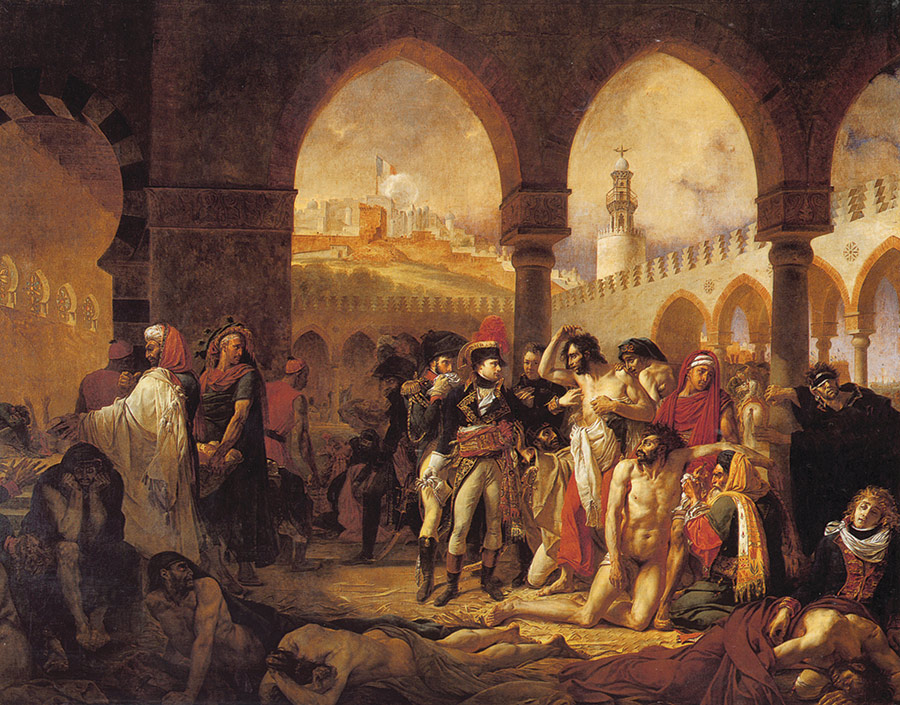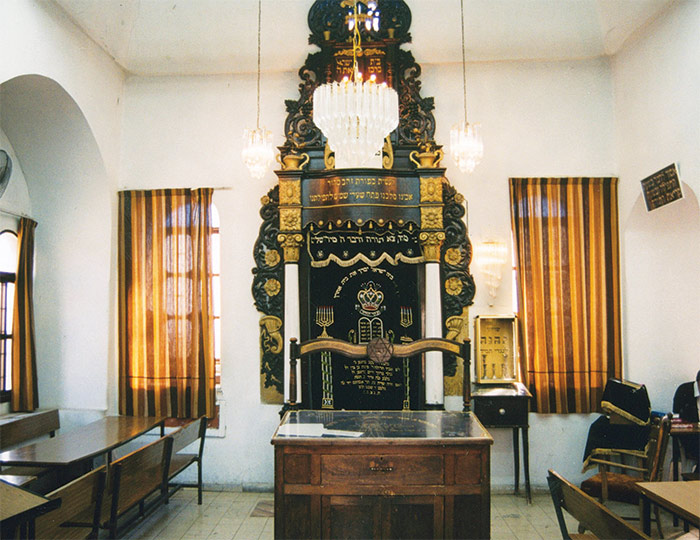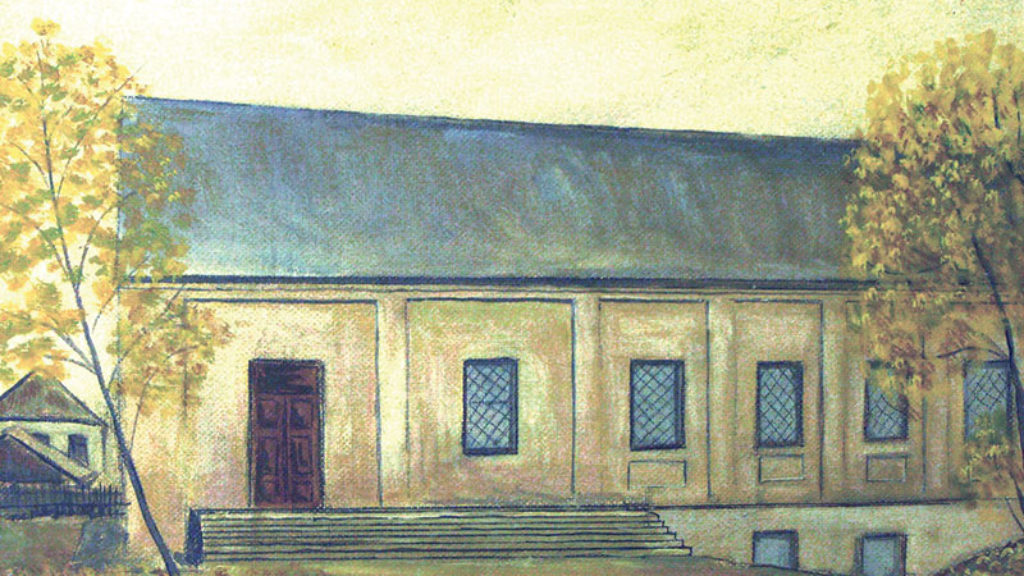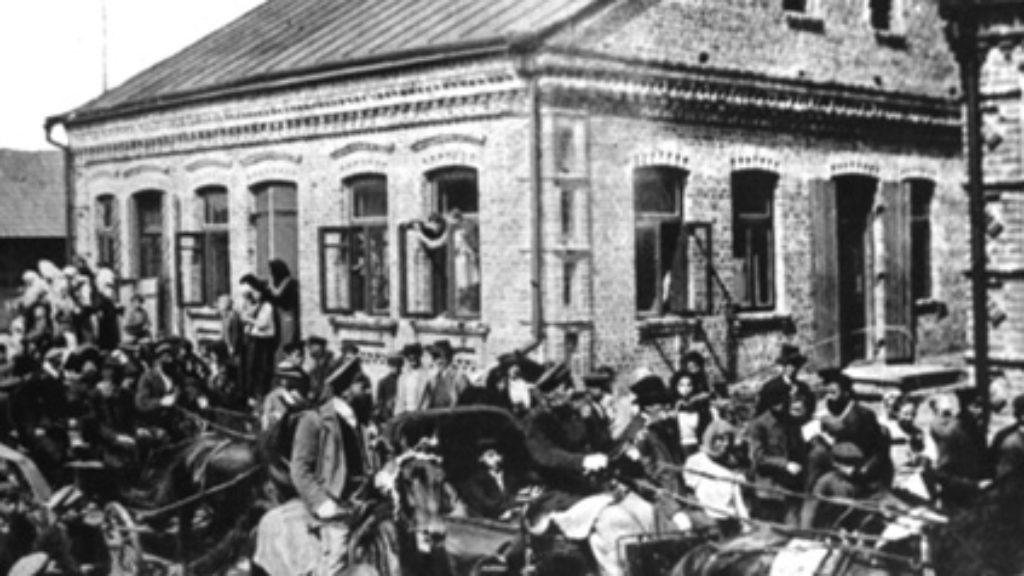A Plague on the Shores of the Sea of Galilee
To Ada ז״ל
The death of the Great Maggid in December 1772, a week before Hanukkah, was a crucial moment in the Hasidic movement’s early history. Rabbi Dov Ber Friedman, the Maggid of Mezheritch, had ascended to the leadership of the movement 12 years earlier, following the death of its putative founder, Rabbi Israel Ba’al Shem Tov. There are many tales, but few established facts, about the relationship between the Ba’al Shem Tov and the Maggid. We do know that in his relatively short period of leadership, the Maggid was extremely successful in spreading the revolutionary teachings of the new spiritual movement, in particular that there is no place free from God, and that the Hasid must break through the illusory boundaries of the self and lose himself in God through ecstatic prayer and joyful service.
In May 1772, seven months before the death of the Maggid, Vilna’s rabbinic leadership placed a ban on members of the new movement as dangerous heretics. The writ of herem punningly referred to Hasidim as “hashudim” (suspects), and it declared that “until they repent completely, they must be divided and dispersed.” This came just a month after the Maggid’s great student Aharon of Karlin died during Passover of 1772 at the age of 36. Thus, by the end of 1772, Lithuanian Hasidim had lost their two principal leaders and were facing fierce attacks by the powerful rabbinic establishment in Vilna. Rabbi Menachem Mendel of Vitebsk emerged as the new leader and attempted to appease the Vilna establishment, with little success.
In 1773, Menachem Mendel moved from Minsk to Gorodok, but the political controversy followed him. Four years later, in March 1777, he led a caravan of 30 Hasidic families to the Holy Land. His second in command, Rabbi Abraham Katz of Kalisk, known as the Kalisker, was an ecstatic teacher who would not only shout aloud fervently in prayer but even turned cartwheels in his devotional excitement and self-forgetfulness (a fact caustically noted in the Vilna herem). After six months of travel through southern Poland, the Black Sea, and Constantinople, their caravan finally arrived at the shores of Palestine in September 1777. They settled in Safed. As the home of the kabbalists during the golden era of the mid-16th century, Safed was a natural choice, and, at first, it seemed that the new immigrants were welcomed by the local community. But, within a few months, controversy arose. Now it was the Hasidim who found heretics in their midst. “In the holy city of Safed, may it be promptly rebuilt and rise in our own days, we have found none but complete evildoers, the believers of Shabbtai Zevi, may his name and memory be obliterated,” wrote Menachem Mendel in April 1781, shortly after leaving Safed and moving to Tiberias, the second holy city in the Galilee.
Rabbi Menachem Mendel and his
companions were not the first Hasidim to establish residence in Tiberias. In
1764, Rabbis Nachman of Horodonka and Menachem of Premishlan had
led a small group of disciples of the Ba’al Shem Tov to the Holy Land and
settled in that city; four years later they established the first Ashkenazi
synagogue on the shores of the Sea of Galilee. Initially, Menachem Mendel and
his companions joined this shul, but soon they found themselves wanting to pray
in their own shul with their own distinctive customs. The local Jew who was appointed by
the Ottoman authorities to run the affairs of the Tiberias Jewish community was
reluctant to let the newcomers establish
another synagogue, but following a demonstration of the spiritual power of loud
Hasidic prayer under his balcony during his Shabbat afternoon nap, the official
changed his mind. In 1785, Rabbi Menachem Mendel of Vitebsk built a fine
three-floor house. The upper floor served (and still serves) as a small
synagogue.

In 1784, the Kalisker followed Menachem Mendel from Safed to Tiberias. He was, however, not only content davening in the old shul of the disciples of the Besht, but even improved it by building a mikvah (ritual bath) in its basement and digging a 100-yard underground aqueduct from the Sea of Galilee to feed the new mikvah. He also placed shmires (amulets) in its foundations. The mikvah endured two major earthquakes (in 1837 and 1927) and remained functional until a flood destroyed it in 1934.
Both Rabbi Menachem Mendel and the Kalisker kept an extensive correspondence with their disciples in White Russia. A joint letter, dated December 1785, expresses gratitude for the Belarussian community’s financial support, which allowed the immigrant Hasidim to leave Safed and take roots in Tiberias. This move, they wrote, not only saved their souls from strife with “evildoers” but also, as they now realized, saved their bodies from the ongoing cholera plague.
In your generosity, you saved us from the hand of the Lord that was upon us, a very heavy plague which struck the holy city of Safed and all the lands surrounding us, far and nearby. But here, in the holy city, no strike and no pestilence, for the eye of the merciful Lord spared us and our brothers who are in the fields around the holy city of Safed. . . . Some of our men here just came from Safed before the beginning of the plague. And some fled to the small towns and villages in the surrounding areas, the places favored by the Lord, not smitten by the plague. In the village of Peki’in too, there was no plague. With God’s great grace and abundant mercy, none of our people are lost.
These words of relief turned out to be somewhat premature. Another letter, from Shevat (February) 1786, describes the plague surrounding Tiberias on all sides.
And a fire went in the land of the living, passing through all villages and towns encircling us. Only here, in the holy city, there was no pestilence, as God’s grace and mercy shielded us, and no disease came into our abode, for the Lord passed over our houses.
But before Passover comes Purim, and by Purim, Tiberias had been stricken by the plague. Rabbi Menachem Mendel sealed himself and 10 of his disciples in his newly built house. For more than two months, no one came in or out of the walls of the house. Preparations for Passover, the Seder night, the mourning days of the Omer, and the Hasidic gatherings at the end of the Sabbath were all experienced in quarantine on the shores of the Galilee.
The Kalisker, meanwhile, followed his ailing son to the village of Peki’in, where he himself fell ill. Seeking a place to heal, the Kalisker and his son climbed the mountain and found shelter in a cave, as if reenacting the talmudic story of Rabbi Shimon bar Yochai and his son, Elazar, who hid in a Peki’in cave during the Hadrianic persecutions. Following a long illness, which they described as coming in waves, the Kalisker and his son eventually recovered.
For both the Kalisker and Rabbi Menachem Mendel, past and present blurred in their thoughts about the plague: The 10 plagues of Egypt, Passover, the plague of the disciples of Rabbi Akiva who perished during the Omer between Passover and Shavuot, and their own day-to-day experience of cholera in Tiberias were uncannily fused. A year later, in May 1787, Rabbi Menachem Mendel wrote:
My thoughts cannot contain the dimension of our terror and angst, the cry of the sick which circulated in the markets, the shuddering and tremor which grabbed us, the terror inside the rooms. And though the Lord’s grace surrounded us, and all who entered our walls were at peace in my home and fresh in my sanctuary—“fear not” I told them—still I could not disguise the Lord’s terror which broke my bones; those who watched me could easily see. Throughout the days of the confinement, I was left powerless, having nothing to pause the brain, as if I could not stand living anymore, out of mercy and contemplation on those left outdoors. The whole head was sick, and the whole heart faint. Ever since then, I have not recuperated, may the Lord heal and enliven me.

A year later, Rabbi Menachem Mendel passed away. The Kalisker succeeded him and led the Hasidic community in Tiberias for more than 20 years, until his demise in 1810. Rabbi Menachem Mendel’s house, where he and his company had quarantined during the days of the plague, collapsed in the great earthquake of 1837. It was purchased and restored by the Karlin Hasidim, who traced their spiritual lineage back to the Maggid of Mezheritch’s student Rabbi Aharon of Karlin, in 1869. Since then, it has been used as a Karliner shul. In 1949, following the Palestinian population’s evacuation, the local government, in its eagerness to modernize, destroyed most of the old city of Tiberias, including seven synagogues. However, local Hasidim were able to convince the authorities to save Rabbi Menachem Mendel’s house. In 1957, Rabbi Yochanan Perlow, the last Karliner Rebbe, who had died in New York the year before, was reburied in the old Hasidic cemetery in Tiberias, and the Hasidim established a mesivta (rabbinic school) in the house and synagogue of Rabbi Menachem Mendel, thwarting new municipal plans to flatten the place. One can still visit and pray in this house in Tiberias, where Menachem Mendel and his Hasidim sheltered during the cholera plague of 1786, on the shores of the Galilee.
Comments
You must log in to comment Log In
Suggested Reading

No Empty Place
The most substantial theoretical response to Hasidism from a leader of the mitnagdic—literally, opposition—movement did not appear until 1824, three years after the passing of its author, Rabbi Chaim of Volozhin.

The Lost Textual Treasures of a Hasidic Community
The Regensburg Library at the University of Chicago contains a catalogue of markings and stamps from books saved from Nazi destruction. One such stamp comes from the library of the Karlin-Stolin Hasidim, a collection that might contain the most valuable manuscript for understanding the roots of Hasidism. But where is it?
Visualizing Hasidism
Everything contains sparks of the divine, the Ba’al Shem Tov and his disciples taught; therefore, everything—even material things—can be sanctified.
Kibitzing in God’s Country
It may come as a surprise that there is an entirely different Catskills, a Catskills that doesn't involve Grossinger's, bungalow colonies, or Jews, in the words of Billy Crystal, eating "like Vikings."
Prof. Gershon David Hundert
Abraham Kalisker commented very critically on the Tanye when it was published. He said, too much oil extinguished the flame.